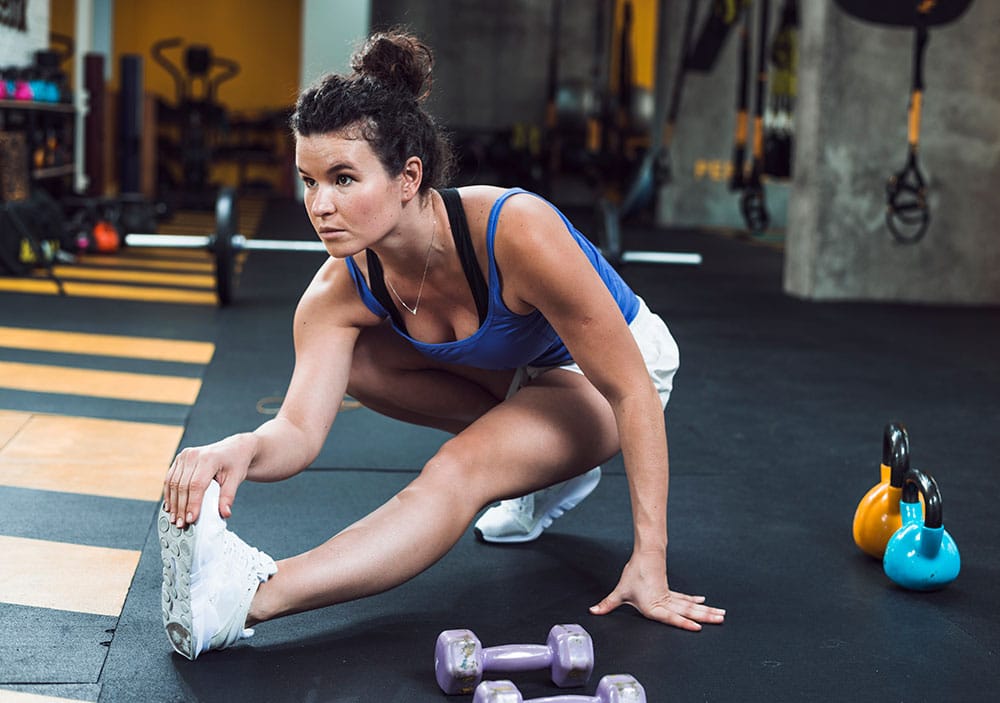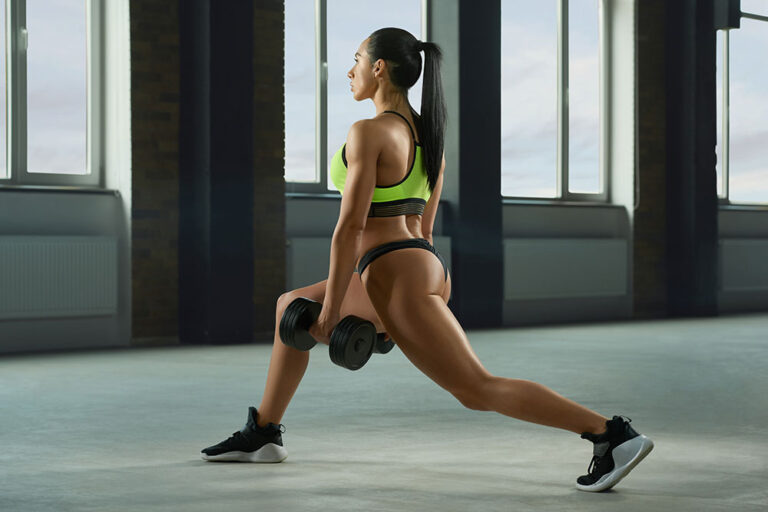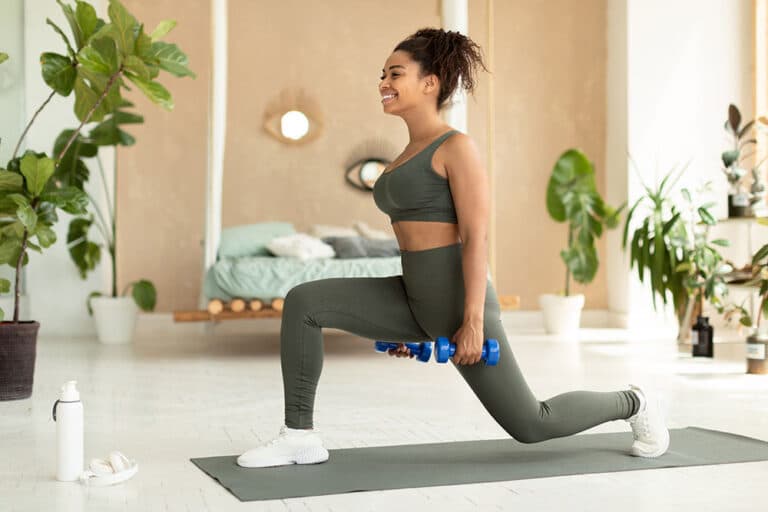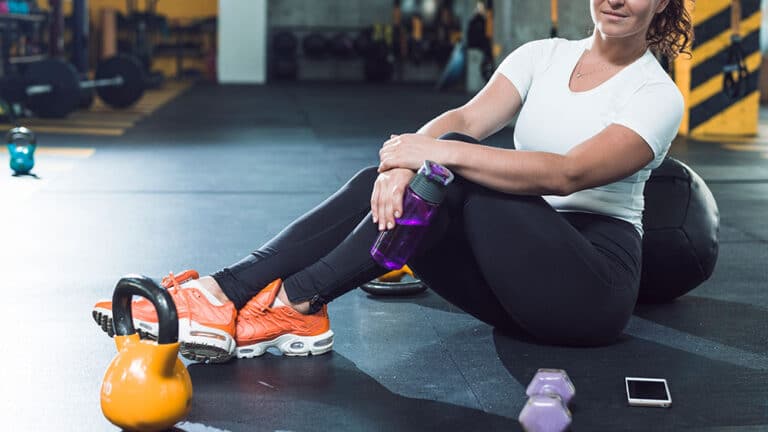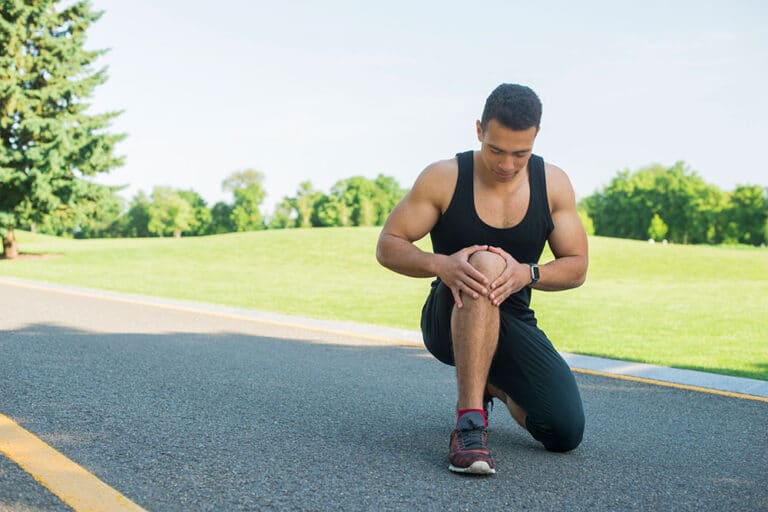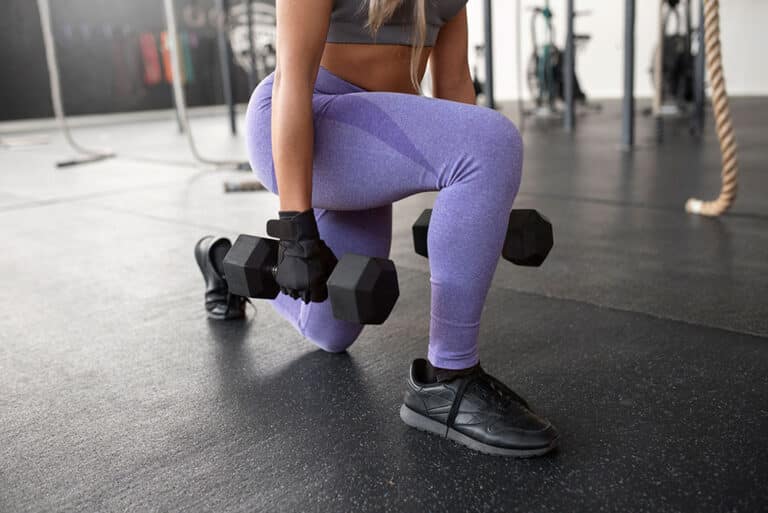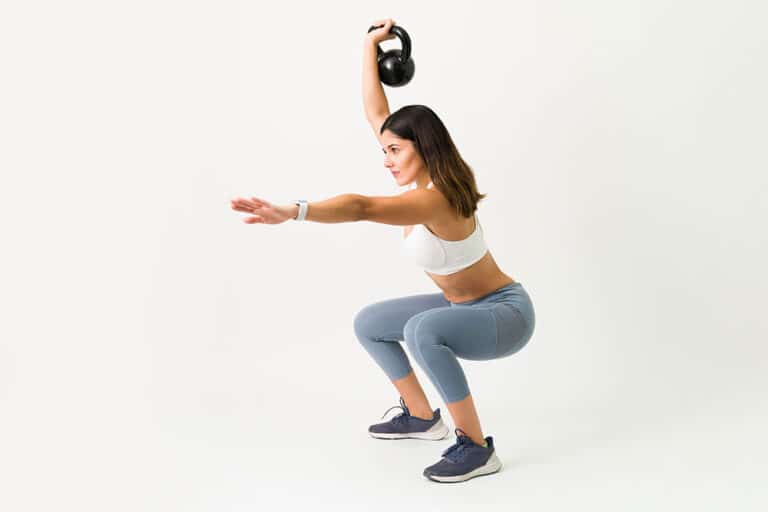Leg Exercises for Strength and Stamina
Importance of Leg Strength
Leg strength is crucial for runners and health enthusiasts alike. Running is an excellent way to build leg muscles, particularly the hamstrings, quadriceps, and calves (MasterClass). These muscles are fundamental for better balance, stability, and overall strength. Incorporating a focused leg strengthening routine can make runners more efficient, increase their power, and improve their endurance (Fleet Feet).
Benefits of Leg Exercises
Engaging in leg exercises can yield numerous benefits. For instance, runners who incorporate strength training into their regimen see significant improvements in their running economy and exhibit a lower risk of injury (Recover Athletics). Here are additional benefits:
- Enhanced Endurance: Stronger legs can handle prolonged activity, allowing for more extended and efficient running sessions.
- Reduced Injury Risk: Robust leg muscles provide better support to the joints, minimizing the chances of strains or sprains.
- Improved Running Form: Practicing proper movement in strength exercises leads to better neuromuscular coordination, which enhances running form and power (Fleet Feet).
- Increased Power and Speed: Strengthening leg muscles helps in generating more force during each stride, contributing to faster running speeds.
For a more detailed breakdown of leg exercises that target different muscle groups, check out our articles on specific techniques like [how to do bodyweight squats] and [bodyweight lunge variations].
| Benefit | Description |
|---|---|
| Enhanced Endurance | Stronger legs sustain prolonged activity, boosting running sessions’ efficiency. |
| Reduced Injury Risk | Strengthened muscles support joints, reducing the chances of strains or sprains. |
| Improved Running Form | Proper movement in strength exercises improves coordination, enhancing running form and power. |
| Increased Power and Speed | Stronger muscles generate more force per stride, contributing to faster running speeds. |
By incorporating these leg exercises, one can experience improved performance and a notable decrease in injury while running. For those seeking alternative ways to strengthen their legs without conventional methods, look into [calf exercises without weights] and [quick leg workout no equipment].
Strength Training for Runners
Incorporating strength training into a runner’s routine is vital for enhancing performance and reducing the risk of injuries. Here, we will explore the frequency of strength training and how to effectively integrate these sessions into a running program.
Frequency of Strength Training
Experts suggest that runners should aim to complete 2-3 leg strength training sessions per week (Recover Athletics). Running coach Susan Paul emphasizes that training twice a week is often sufficient to see significant improvements (Runner’s World UK).
A common schedule might look like this:
| Frequency | Sessions per Week |
|---|---|
| Minimum | 2 |
| Optimal | 3 |
Integrating these sessions can greatly enhance muscle strength, power, and endurance, which are crucial for maintaining a strong stride and preventing common running injuries.
Incorporating Strength Training Sessions
Incorporating strength training into a runner’s schedule requires strategic planning to balance effort and recovery. The best approach is to align strength training sessions with run days, ideally on days when you’re already pushing your limits, such as during tempo runs or track workouts (Recover Athletics). This allows your body to recover more fully on the easier days.
Strategies for Effective Integration
- Run and Lift on the Same Day: By doing strength training on the same day as your harder run workouts, you can keep your easy days truly easy, allowing maximum recovery time.
- Focus on Key Muscle Groups: Target muscles that contribute directly to running performance, such as the glutes, hamstrings, quads, and calves. For specific exercises, check out our guides on bodyweight lunge variations and calf exercises without weights.
Here’s a sample weekly schedule to incorporate strength training with running:
| Day | Activity |
|---|---|
| Monday | Tempo Run + Strength Training |
| Tuesday | Easy Run |
| Wednesday | Recovery or Rest |
| Thursday | Speed Work + Strength Training |
| Friday | Recovery Run |
| Saturday | Long Run |
| Sunday | Recovery or Cross-Training |
Balancing strength training with running ensures that muscles are not overworked and recovery is optimized, minimizing the risk of injuries and improving overall performance. If you’re new to strength training, start with basic exercises and gradually progress. For more tips on leg exercises, visit our pages on [how to do bodyweight squats] and [quick leg workout no equipment].
Recommended Leg Exercises
For runners looking to enhance their performance and minimize injury risk, integrating effective leg exercises into their routine is crucial. Here are three highly recommended exercises for leg strengthening: squats and variations, calf raises with weights, and Romanian Deadlifts (RDLs).
Squats and Variations
Squats are a fundamental exercise for building leg strength, targeting key muscle groups such as the quadriceps, glutes, and hamstrings. They help runners improve their stamina and overall leg power (Recover Athletics). Several variations of squats can further enhance strength and mobility.
Variations of Squats:
- Bodyweight Squats: A basic squat ideal for beginners. Learn more: [how to do bodyweight squats].
- Sumo Squats: Focuses on the inner thighs and glutes.
- Bulgarian Split Squats: Targets the quadriceps and improves balance.
- Pistol Squats: A challenging single-leg squat that builds unilateral strength. Learn more: [how to do pistol squats].
| Squat Variation | Target Muscles |
|---|---|
| Bodyweight Squat | Quads, Glutes, Hamstrings |
| Sumo Squat | Inner Thighs, Glutes |
| Bulgarian Split Squat | Quads, Glutes, Hamstrings, Balance |
| Pistol Squat | Quads, Glutes, Hamstrings, Balance |
For a diverse leg workout, try combining different squat variations in your routine. Explore more squat exercises: [bodyweight leg challenge].
Calf Raises with Weights
Calf raises are essential for strengthening the calves, which play a significant role in running efficiency and reducing the risk of injuries like shin splints. Adding weights to calf raises can increase the intensity and further enhance muscle development (Fleet Feet).
Performing Calf Raises:
- Standing Calf Raises: Stand with feet hip-width apart, lift your heels off the ground, and lower them back down.
- Weighted Calf Raises: Hold a dumbbell in each hand while performing the raise for added resistance.
- Single-Leg Calf Raises: Perform the exercise on one leg to improve balance and strength.
| Calf Raise Variation | Target Muscles | Equipment Needed |
|---|---|---|
| Standing Calf Raise | Calves | None |
| Weighted Calf Raise | Calves, Ankles | Dumbbells |
| Single-Leg Calf Raise | Calves, Balance | None |
Interested in calf exercises without weights? Visit: [calf exercises without weights].
Romanian Deadlifts (RDLs)
Romanian Deadlifts (RDLs) are an excellent exercise for targeting the hamstrings and glutes, crucial for generating the explosive power needed by runners. RDLs also improve hip strength and stability (Recover Athletics).
Performing RDLs:
- Stand with feet hip-width apart, holding a barbell or dumbbells in front of your thighs.
- Keep your knees slightly bent and hinge at the hips, lowering the weights along your legs.
- Keep your back flat and core engaged.
- Return to the standing position by driving through your heels and extending your hips.
| Exercise | Target Muscles | Equipment Needed |
|---|---|---|
| Romanian Deadlift | Hamstrings, Glutes, Lower Back | Barbell or Dumbbells |
For more exercises and tips on leg strength for runners, explore: [quick leg workout no equipment].
Integrating these exercises into your post-run routine can significantly enhance your leg strength and stamina, helping you achieve your running goals while reducing the risk of injuries. Additionally, don’t forget to check out our articles on how to build leg muscle without weights and leg exercises while traveling for more workout ideas.
Preventing Running Injuries
Running is a great way to build endurance and stay fit, but it can sometimes lead to injuries. Here, we focus on the importance of cross-training and strategies to avoid shin splints to help runners maintain their health and performance.
Importance of Cross-training
Cross-training is vital for runners to prevent muscle imbalances and injuries. It involves incorporating other forms of exercise into the routine, reducing the repetitive strain running can place on specific muscles and joints. Here are some benefits of cross-training for runners:
- Upper Body Strength: Lifting weights can strengthen the bones in the upper body, improving posture and balance. Good posture reduces the risk of injuries during running.
- Reduced Impact: Activities like yoga, indoor cycling, and swimming help maintain fitness levels while reducing the impact on bones and joints Healthline.
- Flexibility and Balance: Yoga enhances flexibility and balance, which can lead to better running form and fewer injuries.
For more ideas on effective exercises, explore our guide on Leg Exercises for Strength and Stamina.
Strategies to Avoid Shin Splints
Shin splints are a common issue for runners, characterized by dull or throbbing pain along the shin bone due to inflammation of the muscles, tendons, or bone tissue around the tibia Orlando Health. Here are some strategies to avoid them:
- Strength Training: Incorporate strength training exercises to fortify the muscles around the shinbone and hips. Stronger muscles provide better support and reduce strain on the shins.
- Soft Surfaces: Running on softer surfaces, like an indoor track or treadmill, can minimize the impact on the legs and help prevent shin splints.
- Proper Technique: Ensure your running technique is correct to avoid unnecessary stress on your shin bones. Consulting with a running coach or physiotherapist can be beneficial.
- Gradual Increase: Increase your running intensity and distance gradually. Sudden hikes in running mileage can lead to overuse injuries.
These precautions can also prevent more severe conditions, like stress fractures, which may require six to eight weeks of recovery and medical attention if not addressed early Orlando Health.
In cases where shin splints do develop, basic treatment includes rest and allowing several weeks for healing Health Xchange. For additional exercises and tips, refer to our articles on how to build leg muscle without weights and leg workout frequency bodyweight.
By focusing on cross-training and implementing strategies to avoid shin splints, runners can enjoy longer, injury-free runs, enhancing both their performance and fitness levels.
Muscle Groups for Running
Understanding which muscles are engaged while running is crucial for developing an effective leg strengthening routine. Key leg muscles involved in running include the hip flexors, quadriceps, calves, hamstrings, glutes, and core muscles. Strengthening these muscles can enhance speed, endurance, and reduce injury risk, such as runner’s knee or IT band syndrome (Peloton).
Key Muscles Used in Running
When running, multiple muscle groups work together to create efficient and effective movement. Here is a list of the key muscles used while running:
- Hip Flexors: Essential for lifting the legs during the running stride.
- Quadriceps: Provide power for accelerating and decelerating.
- Calves: Crucial for push-off power during the running stride.
- Hamstrings: Assist in leg flexion and stabilizing the knee.
- Glutes: Power the body forward, stabilize the pelvis, and support the spine, knees, and feet.
- Core Muscles: Maintain balance and stability.
Strengthening Glutes and Calves
Strong glutes and calves are essential for improving running performance and preventing injuries.
Glutes
The glute muscles, including the gluteus maximus, gluteus medius, and gluteus minimus, are vital for powering the run and maintaining proper form. Weak glutes can lead to various issues, such as knee problems. Here are some exercises to strengthen the glutes:
- Step-Ups: Great for targeting the gluteus maximus.
- Hip Thrusts: Focuses on both the gluteus maximus and medius.
- Side Planks: Strengthens the gluteus medius, which helps in stabilizing the pelvis.
- How to Do Pistol Squats: Excellent for overall glute strength and stability.
To incorporate these into your routine, check out our bodyweight leg challenge.
| Exercise | Target Muscles | Difficulty Level |
|---|---|---|
| Step-Ups | Gluteus Maximus | Moderate |
| Hip Thrusts | Gluteus Maximus & Medius | Moderate |
| Side Planks | Gluteus Medius | Moderate |
| Pistol Squats | Glutes | High |
Calves
Strong calf muscles, particularly the soleus muscle, are essential for generating push-off power. Weak calves can lead to reduced push-off power and potential compensation injuries. Here are some effective exercises:
- Calf Raises: Basic yet effective for the gastrocnemius and soleus muscles.
- Seated Calf Raises: Focuses more on the soleus muscle.
- Single-Leg Calf Raises: Provides extra focus and strength to each calf individually.
- Box Jumps: Adds a plyometric element to calf strengthening.
For more calf-focused exercises, explore our calf exercises without weights.
| Exercise | Target Muscles | Difficulty Level |
|---|---|---|
| Calf Raises | Gastrocnemius & Soleus | Easy |
| Seated Calf Raises | Soleus | Moderate |
| Single-Leg Calf Raises | Gastrocnemius & Soleus | Moderate |
| Box Jumps | Calves | High |
By focusing on these key muscles and incorporating targeted exercises into your training regimen, you can enhance your running performance and minimize the risk of injury. For a quick routine that incorporates these exercises, visit our section on quick leg workout no equipment.
Effective Leg Exercises
Building leg strength and stamina is essential for runners. Effective leg workouts target key muscle groups, ensuring that the legs are powerful and resilient. Here we explore the best exercises to achieve this.
Squats and Variations
Squats are a cornerstone of leg strengthening exercises. They not only target the quadriceps, hamstrings, and glutes, but also improve overall stability and endurance.
Bodyweight Squats: These are great for beginners and effective for warming up. For more details, visit our guide on [how to do bodyweight squats].
Sumo Squats: Perform these with a wider stance to target the inner thighs more effectively.
Bulgarian Split Squats: Elevate one leg on a bench or chair behind you. This variation targets the quadriceps and glutes intensely.
Pistol Squats: Also known as single-leg squats, these are excellent for balance and strength. Learn more about them in our article on [how to do pistol squats].
Here’s a table demonstrating the muscle groups targeted by different squat variations:
| Squat Type | Target Muscle Groups |
|---|---|
| Bodyweight Squats | Quadriceps, Hamstrings, Glutes |
| Sumo Squats | Inner Thighs, Quadriceps, Glutes |
| Bulgarian Split Squats | Quadriceps, Glutes |
| Pistol Squats | Quadriceps, Hamstrings, Glutes |
For a comprehensive leg challenge, visit our [bodyweight leg challenge].
Lunges and Plyometric Exercises
Lunges are essential for runners, improving muscle strength, coordination, and balance. Plyometric exercises add an explosive element, enhancing power and agility.
Lunges:
Reverse Lunges: These are performed by stepping backward, reducing strain on the knees. Explore our guide on [bodyweight lunge variations].
Jumping Lunges: An advanced variation that combines a lunge with a jump, activating and strengthening the quads, hips, and glutes while improving stability and coordination (Fleet Feet). Master walking lunges before attempting these to prevent injuries.
Plyometric Exercises:
Box Jumps: These enhance explosive power in the legs. Jump onto a box or a sturdy platform, focusing on a soft landing and controlled movement.
Skater Jumps: Mimic the motion of skating, moving laterally to work the glutes, quads, and calves.
Wall Sits: Hold a seated position against a wall to build endurance in the quadriceps. Visit our article on [wall exercises for legs] for more information.
Single-Leg Deadlifts: Target the hamstrings and glutes, enhancing stability and strength.
Here’s a table showcasing lunges and plyometric exercises:
| Exercise Type | Target Muscle Groups |
|---|---|
| Reverse Lunges | Quadriceps, Glutes, Hamstrings |
| Jumping Lunges | Quads, Hips, Glutes |
| Box Jumps | Calves, Quads, Glutes |
| Skater Jumps | Glutes, Quads, Calves |
| Wall Sits | Quadriceps, Glutes |
| Single-Leg Deadlifts | Hamstrings, Glutes, Core |
Incorporating these exercises into your routine can significantly boost your leg strength, stamina, and overall performance. For those new to plyometrics, our guide on [plyometric exercises for legs] provides additional insights.
For leg workouts that can be done without equipment, check out our [quick leg workout no equipment] guide. Additionally, visit [morning leg exercises] for a variety of exercises to start your day with a strength boost.
For those with specific needs, explore our guides on [leg exercises for bad knees] and [leg exercises for elderly].
- About the Author
- Latest Posts
Johnnie D. Jackow Sr., the founder and CEO of Total Body Fitness, Worldwide, has a long-standing career in the fitness industry. He began as a certified personal trainer in the mid-90s and soon after authored his first weight loss book in 1998. This led to the launch of Total Body Fitness, Nationwide in the USA at the same time. Johnnie gained recognition as the fitness guru of his time, running infomercials on local TV late at night in Houston, Texas. Over the years, he has helped more than 40,000 individuals from all over the world achieve their health and fitness goals. With over 60,000 hours of documented training in integrative functional medicine, he completed his PhD in human physiology in 2010. His primary objective is to assist people in reaching their health and fitness goals through alternative approaches rather than relying solely on conventional medicine and pharmaceutical drugs. Today, with almost three decades of experience under his belt, Johnnie continues to be a leader in health and fitness.

